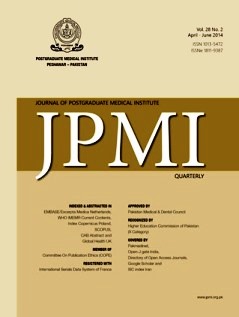Biomass fuel smoke: A silent killer
Main Article Content
Abstract
Solid fuels use is defined as the domestic combustion of organic materials such as animal dung, crop residues, wood and coal used for cooking, lighting and heating purposes. These sources include wood,dried twigs and grass, crop residues, and animal dungcakes, which collectively are called biomass fuels. Although in developed world these highly polluting fuel sources have been replaced with cleaner sources, such as liquified petroleum gas and electricity, it is estimated that still nearly 50% of all house-holds worldwide and 90% of all rural households continue to use biomass fuel as their main domestic source of energy. On a global scale, the household use of solid fuels is the most important source of indoor air pollution and the exposure to the by-products of the combustion of biomass fuels, particularly wood smoke, has been related to numerous respiratory problems, and increased mortality and burden of disease. Recent data attribute 1.5 to 2 million deaths worldwide every year equivalent to 4 to 5% of total global deaths to indoor air pollution and most of them (1 million) occurring in children younger than 5 years due to acute respiratory infections (ARI). In fact, the emerging data from recent studies indicate that risk-wise biomass fuel smoke ranks only below malnutrition and poor quality of water / sanitation. Similarly worldwide today, indoor air pollution ranks tenth while in developing countries it ranks fourth among preventable risk factors contributing to the global burden of disease.
Article Details
How to Cite
1.
Ali S, Javaid A. Biomass fuel smoke: A silent killer. J Postgrad Med Inst [Internet]. 2014 Apr. 17 [cited 2025 Dec. 13];28(2). Available from: https://jpmi.org.pk/index.php/jpmi/article/view/1634
Issue
Section
Editorial
Work published in JPMI is licensed under a
Creative Commons Attribution-NonCommercial 2.0 Generic License.
Authors are permitted and encouraged to post their work online (e.g., in institutional repositories or on their website) prior to and during the submission process, as it can lead to productive exchanges, as well as earlier and greater citation of published work.


